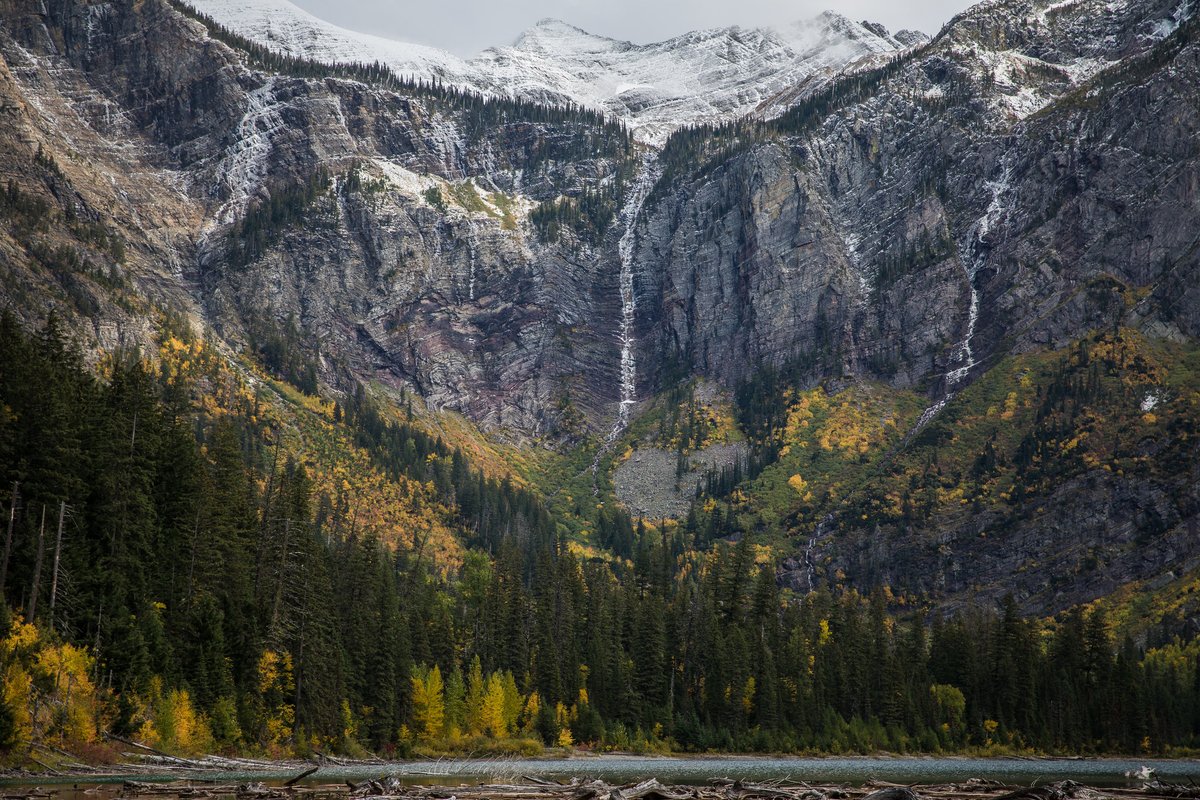What runs but never walks, murmurs, but never talks, has a bed but never sleeps, and has a mouth but never eats?
... a river! 💧
... a river! 💧

When you watch the crystal-clear rivers and creeks of Glacier, they seem to have a life of their own.
Thanks to melting snow, creeks and rivers flow fast in the spring—their water level rises, and they run brown with debris. As snowpack diminishes late in the summer, some creeks dry up entirely, and rivers shrink back to reveal their rocky shores.
Many refer to mountains as the water towers of the west, slowly releasing melting snow throughout the year. 80% or more of the surface water in western North America starts as snow in the mountains!
The amount of snow, and when that snow melts depends on the climate. As a result, climate change is altering streamflow patterns.
Mountain snowpack has started to melt sooner—leading peak streamflow to occur earlier in the year. On average, SNOTEL (snow monitoring) sites have observed a loss of two weeks' worth of snow cover across the Western U.S. when compared to 1969.
On top of impacting irrigation and hydroelectric power, streamflow affects wildlife.
Harlequin ducks live and breed on fast-moving water, and return to Glacier in April when water should be at its lowest, giving females a better chance to find food and prepare to lay eggs.
Harlequin ducks live and breed on fast-moving water, and return to Glacier in April when water should be at its lowest, giving females a better chance to find food and prepare to lay eggs.
Surges in streamflow can affect the success of their nests.
In 2018, creeks were high, muddy, and fast-flowing the month of May.
In 2018, creeks were high, muddy, and fast-flowing the month of May.
When researchers went to count ducks in July, they found that only one female had chicks. The other 20 females were alone, indicating major reproductive failure.
Harlequins have returned to raise chicks in those same creeks since, and will have to adapt to future changes.
They show how, for some life in Glacier, timing is everything. #GlacierMovingForward
They show how, for some life in Glacier, timing is everything. #GlacierMovingForward
[Image description] This photo of a forested creek was taken on the traditional land of the Amskapi Piikuni, Kootenai, Selis, and Qlispe People in 2013. 📍
• • •
Missing some Tweet in this thread? You can try to
force a refresh









